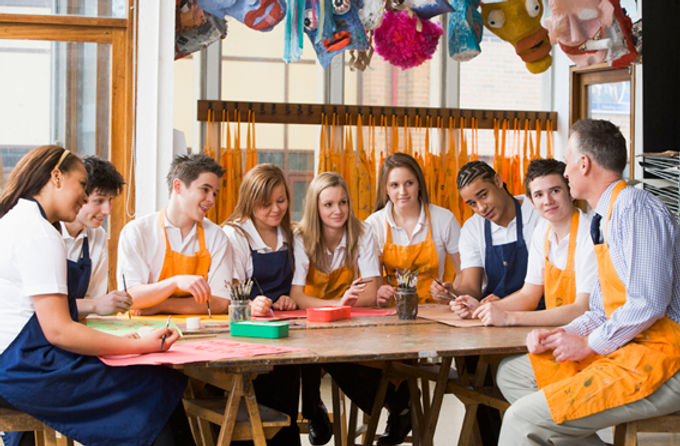PhD (Arts Ed), MTeaching, MMus (Perf), BMus, BMedSci (Hons)
DipModLang (German), ZMP (German) DELF B2 (French), Churchill Fellow
Standard 4
Create and maintain supportive and safe learning environments

Evidence 10. REQUIRED EVIDENCE
APST 4.3. Manage challenging Behaviour
ARTEFACT: Kagan cooperative learning cards and poster
APST 4.3. Proficient: Manage challenging behaviour by establishing and negotiating clear expectations with students and address discipline issues promptly, fairly and respectfully.
This rich piece of evidence shows a tool I created in collaboration with my supervising teacher to instigate a change in the way group work was undertaken in Year 8 music at the school where I attended my first SPE (2019). During the first part of my practicum, most of the lessons in Years 7, 8 and 9 consisted of project work in small groups. But there was a problem. The students didn’t know how to work in groups effectively. The workload was unevenly distributed and the students lacked skills and strategies in getting things done collaboratively and using their time wisely. With very few exceptions, the students were not working in a way considered to be cooperative by Johnson, Johnson and Smith (1998), such as sharing goals, being individually accountable, working to encourage and support each other, using good group skills or processing their learning together (p. 38). The more motivated students were tending to carry the majority of the load, while in many groups there was at least one student who was disengaged, distracting and/or disruptive. This behaviour continued despite rotating visits and guidance by the supervising teacher and me.
I consulted with the supervising teacher and offered some of the strategies I had learned in my studies and in resources I found in the classroom (Heath, 2010; Kagan & Kagan, 2015). She encouraged me to implement and experiment with some of them.
I taught the various roles of Kagan and Kagan’s cooperative learning (2015) using a cooperative learning strategy: a small group/full class jigsaw activity to teach the language and job of each role. See the image of the whiteboard at the end of the activity, after every student had contributed to the table. See photograph below, "How do committees work?"

Evidence 10. Continued...
The class was a Year 8 music class. For their final task of the year, they were about to form a song-writing committee and spend the rest of the term writing a class song for recording and production of a CD. Although some of the role descriptions were not well adapted to creative projects, adopting the roles made an immediate difference in their productivity and evenness of the workload. I also turned the Checker into a Creative Checker, using a Tournament of Minds strategy. What was less clear was how cooperative learning roles or strategies might enhance instrumental music. But Stewart (2016) and Djordjevic (2007), amongst others, have shown the strategies to work even in instrumental teaching situations.
I created a poster, which was put on the wall as a permanent fixture. It is featured below. The supervising teacher made corresponding cue cards for each role, which included 'gambits.'
After the initial class activity I asked for exit cards. Their responses indicated relief in the students who were used to carrying the load in small groups, and increased participation of the students who had previously been behaving in challenging ways.
In addition to this initiative, I also practised establishing and negotiating clear expectations with students and address discipline issues promptly, fairly and respectfully, by successfully employing a strategy described by Jennifer Gonzalez (2013) to reduce noisy behaviour and increase attention when the teacher addresses the class. This strategy requires that the teacher talk only after waiting slightly longer than feels normal or natural. When we don’t wait, we subtly give the message that we don’t really expect absolute quiet or attention.
Since graduating I have undertaken further courses in behaviour management, as it is widely recognized that relief teachers experience higher levels of non-compliance and challenging behaviour from students than permanent teachers. Courses completed include Introduction to Relief Teaching for Graduates; Behaviour Mangaement for Relief Teachers; and Positive Behaviour Management Strategies.
Also satisfies standards 1.1, 1.2, 1.5, 1.6, 2.1, 3.1, 3.2, 3.3, 3.4, 3.5, 3.6, 4.1, 4.2, 6.2, 6.3 and 6.4.

REFERENCES
Kagan, S., & Kagan, M. (2015). Kagan Cooperative Learning. Kagan Publishing.
Djordjevic, S. A. (2007). Student perceptions of cooperative learning in instrumental music. University of Michigan]. Proquest.
Stewart, L. M. (2016). Traditional learning, cooperative learning, and recorder. University of Kansas. Proquest.
Gonzalez, J (2013). The 5-Second Solution for a Talkative Class. Cult of Pedagogy. Retrieved from: https://youtube.com/watch?v=N_HPLMQStug
Heath, T. J. (2010). The impact of a cooperative learning training program on teacher perceptions about cooperative learning (PhD), Walden University, Proquest.
Johnson, D., Johnson, R., & Smith, K. (1998). Active learning: Cooperation in the college classroom. Edina: Interaction Book Company.
.png)